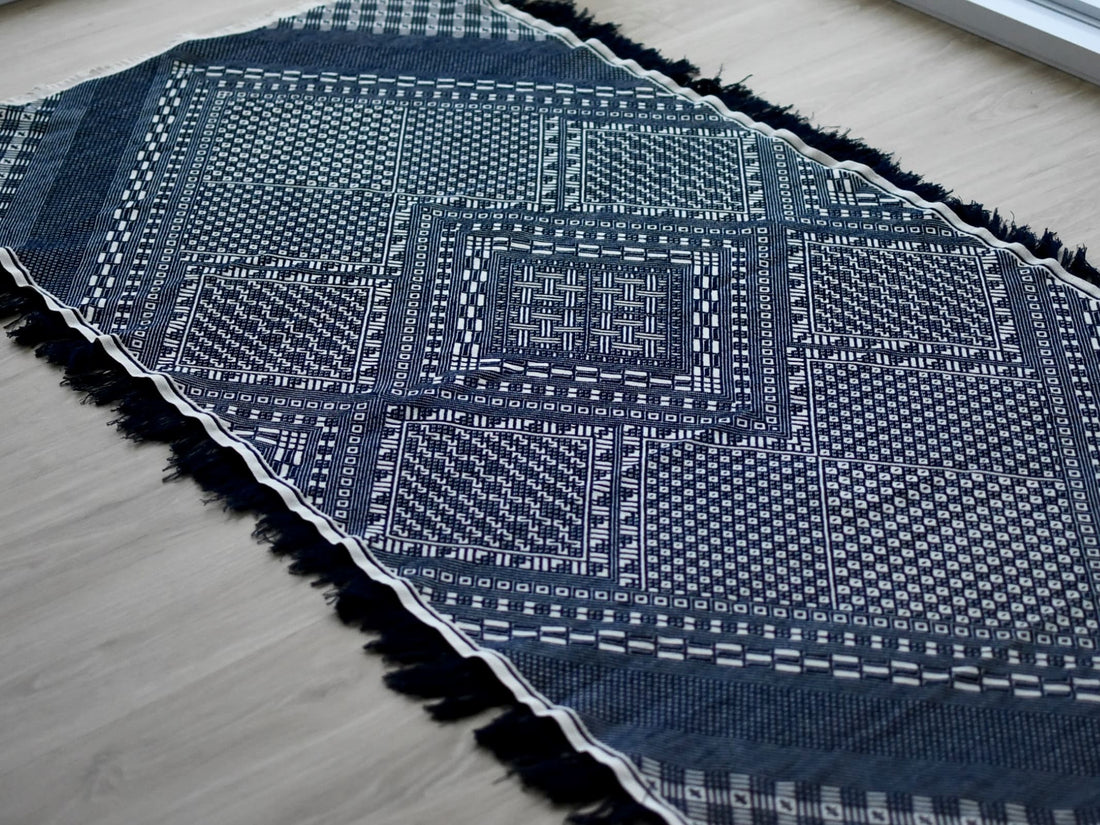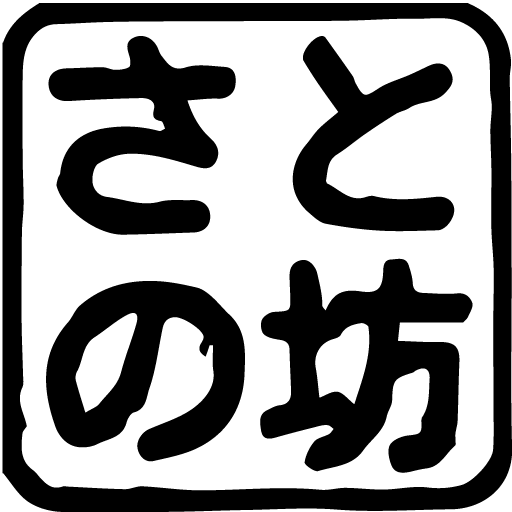
Enjoying Kogin sashimi patterns 1
◆Enjoying Kogin-zashi patterns Sometimes people tell me that `` Kogin-zashi is fun, but it's difficult... ''. When I first started, I wondered if I was stabbing to pull out the threads. So much so, that I made a mistake every time I tried Koginzashi. When I cut back on my sleep and looked at the area where I had been stabbed the next day, I realized that everything was wrong. (lol)
Nowadays, I can enjoy Kogin-zashi more easily than before, so I would like to go back in my memories and rediscover the charm of Kogin-zashi.

(My brother's kogin-zashi coin purse that introduced me to the world of kogin-zashi)
◆If you make a mistake, that's fine too, you can fix it or just move on.
When I first started Koginzashi, I thought that just because there was a pattern, it was correct, and if it didn't turn out exactly as it was, it was wrong. Therefore, if I could not stitch according to the pattern in the book, I would repeatedly pull out the thread and try again. I somehow continued to do it because of the sense of accomplishment I felt when I finished it, but I started spending my time doing more fun things than kogin-zashi, so I left kogin-zashi for a while.
Due to various coincidences, I started doing koginzashi again, but from this time on, I started to be more aware of the fun times I had while doing koginzashi , and as I stepped away from the text and enjoyed it, I started to think that if I made a mistake, it was part of the taste . became. I think personality probably plays a role here, so I think it's best to prioritize the one you feel comfortable with.

(Enjoying the Kogin-zashi pattern, the works are placed next to each other, the theme is "Lake Towada")
◆Enjoying various modoko next to each other After I restarted kogin sashimi, I began to freely enjoy kogin sashimi by choosing interesting modoko (basic patterns) and advanced patterns from kogin zashi books and koginbank's modoko DB. By spending more time choosing colors and combining patterns while creating themes and images in my work, I have come to understand the regularity of traditional Kogin-zashi patterns.
In addition, through my experience of imitating Higashi Kogin, I became able to understand the development of Kogin-zashi patterns , and my time with Kogin became deeper and more enjoyable. In addition, by actively enjoying the thread, new discoveries were made, such as the different ways of expressing it when enjoying it with one color of thread and when enjoying it with multiple colors.

(This is unusual for Higashi Kogin, and there seems to be no matching parts.)
◆Flexibility of traditional patterns As with previous works (including kits), the works in the Japan Folk Crafts Museum exhibition were created without preparing any designs, relying on the flexibility and potential of traditional patterns . What does that mean? That's what it feels like (lol) I would like you to experience this at least once, but there are rules for most traditional Kogin-zashi patterns. The rules have the ability to connect patterns, and do not make them lonely. And create new patterns.
If you look at my work this time, you'll get the impression that I'm desperate about how to connect the patterns , and I think there's a lack of leeway, as if I've somehow found a solution , but I still think, ``Okay, let's move on.'' We will proceed to the next step after confirming that we have a passing score. This is the freedom of traditional patterns and the underlying power of traditional patterns . What's this? It may have become. I would like to prepare cloth and thread for this, explain it again, and get in touch with anyone who would like to share the fun of this and try it out together. please wait for a moment.

(Because there was no pattern , it wasn't perfect, but I was able to fill it in with this work.)
◆Is it okay if there is no pattern?
First of all, I am not against creating a pattern before starting to stitch. However, I want people to know that it is possible to create large Kogin-zashi pieces without preparing a design . Although it may lack the neatness and coolness of a work created from a well-organized design, you can still experience the successful koginzashi .
No, it is not accurate to say that you can do it without a pattern, but rather that it is okay as long as you know the modoko (the basic pattern of Kogin-zashi). I would like you to sew your favorite pattern from koginbank's Modoco DB and the many commercially available books with traditional kogin sashimi patterns. I think your body will start to understand the rules of Kogin-zashi patterns after you stab about 10 different types. Once you have this feeling, you can move forward with faith in the power of traditional Kogin-zashi patterns.
I don't seem to be able to convey it with my expressive ability, so when I receive the kogin-zashi materials, I would like to express what I want to convey on the cloth. please wait for a moment! To my surprise, a Koginzashi package is scheduled to arrive this week!

(This is a work I made in 2018. The Czech doll next door will arrive soon)
◆Feel free to enjoy Satonobo's Kogin-zashi kit as well.The Kogin-zashi kit that I made is also created without creating a design, and then creating the design at the end. We have created all of our kits so far by prioritizing comfort when stabbing and visual comfort. So, the starting point of the work is not on a desk but on a cloth, so I think it's easier to enjoy it. That's what I thought, but it doesn't really work that way! (lol)
Oh, I made a mistake, let's fix it! But it's okay, oh, I was wrong, okay! But that's okay, I hope you enjoy it anyway. There are currently skill up kits ranging from 1 (starter kit) to 10, but this one allows you to have fun while experiencing the basic movements of kogin zashi. You can take the fun of Kogin-zashi one step further by coming up with your own patterns, such as stitching a single pattern, moving diagonally, moving horizontally, encircling, connecting, etc., and being able to enjoy Kogin-zashi without a pattern. I'm making this because I want you to have it . The seasonal enjoyment kits and book cover kits include various Koginzashi movements, but above all, we create them because we want you to enjoy the wide range of Koginzashi designs .

(Book cover kit)
When I learned how to stitch the above pattern without looking at the pattern, I realized that the Kogin-zashi pattern resembled a chemical equation . I think one of the characteristics of Mokogin-zashi patterns is that they can be as simple as you like (getting to the basic pattern). This blog is lacking in specific information to enjoy Koginzashi patterns (sorry!), but I will explain it in my own way once I receive the materials.
There are many things I want to do with my Satonobou activities, but life in America has not yet settled down, so things will be slow, but I look forward to your continued support.
▶️Materials research blog (scheduled to restart in the new year)
▶️Shop (scheduled to be open for a limited time when you return to Japan temporarily next year)
▶️Instagram (We show you the simplicity of Koginzashi through videos etc.)
Satonobou
